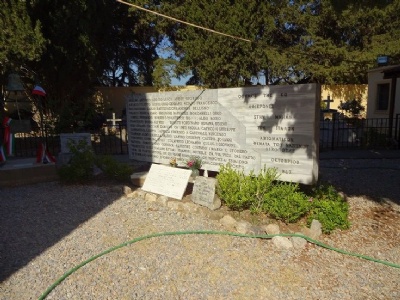Kos - Linopotis
Until September 1943, the Greek island of Kos was under italian rule but came under german rule when the Italians surrendered to the allies, September 8, 1943. In the wake of the italian surrender British forces arrived in Kos to defend the island against a possible German invasion. On October 3, the germans invaded Kos and were superior to the british and italian forces that surrendered October 4. When the Germans attacked Kos, there were 148 Italian officers on the island, some of whom died during the fighting while others were wounded and sent to Germany as prisoners of war. The 110 remaining officers were interned in former Italian army barracks in Linopotis, about ten kilometres west of Kos town. There they were interrogated and given the opportunity to serve in the german army instead of being prisoners of war. Seven chose to serve for the germans. Others were informed that they would be sent to prisoner of war camps on European mainland. On October 6, under the pretext of being transported to the harbor and embark ships which will take them to the Greek mainland, they were instead massacred in a field at Linopotis. They were buried in mass graves.
Current status: Monument (2017).
Location: 36° 53'18" N 27° 17'08" E (cemetery).
Get there: Walk from central Kos town.
Follow up in books: Smith, Peter C: War in the Aegean: The Campaign for the Eastern Mediterranean in World War II (2008).


A year after the massacre and when Kos was liberated by the British, 66 bodies were found at the field an taken to the Catholic cemetery in Kos town where the bodies were buried. The bodies were later returned to Italy for a final funeral. The bodies of the other 37 officers have not yet been found. At the Catholic cemetery there is a memorial dedicated to the massacre and the victims. There have also been discussions about establishing a memorial monument at Linopotis, but this seems to be difficult because it is located on private land. This has also made further excavations and the search for remains more difficult. At the museum of modern history and Italian architecture in Kos town there are objects belonging to the victims found in connection with smaller excavations made in Linopotis.